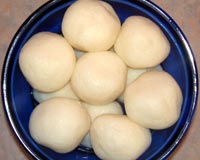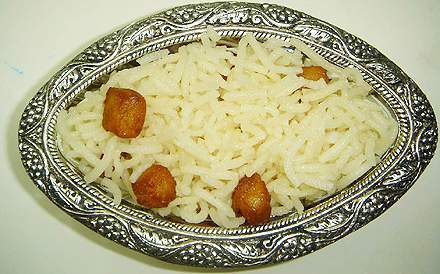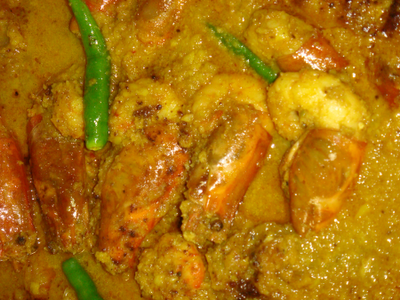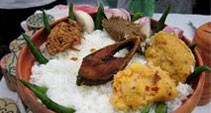|
|
|
|
Rice and fish are traditional favourite foods, leading to a saying in Bengali, machhe
bhate bangali, that translates as "fish and rice make a Bengali". Bengal's
vast repertoire of fish-based dishes includes hilsa preparations,
a favorite among Bengalis. There are numerous ways of cooking fish depending on
the texture, size, fat content and the bones. Sweets occupy an important place in
the diet of Bengalis and at their social ceremonies. It is an ancient custom among
both Hindu and Muslim Bengalis to distribute sweets during festivities.
The confectionery industry has flourished because of its close association with
social and religious ceremonies. Competition and changing tastes have helped to
create many new sweets. Bengalis make distinctive
sweetmeats from milk products, including Rôshogolla,
Chômchôm, Kalojam and several kinds of
sondesh. Pitha, a kind of sweet cake, bread or
dimsum are specialties of winter season. Sweets like coconut-naru, til-naru, moa,
payesh, etc. are prepared during the festival of Lakshmi puja. Popular
street food includes Aloor Chop, Beguni,
Kati roll, and phuchka.
|


|


|
The variety of fruits and vegetables that Bengal has to offer is incredible. A host
of gourds, roots and tubers, leafy greens, succulent stalks, lemons and limes, green
and purple eggplants, red onions, plantain, broad beans, okra, banana tree stems
and flowers, green jackfruit and red pumpkins are to be found in the markets or
anaj bazaar as popularly called. Panta bhat (rice
soaked overnight in water) with onion & green chili is a traditional dish consumed
in rural areas.
Common spices found in a Bengali kitchen are cumin, ajmoda (radhuni), bay leaf,
mustard, ginger,
green chillies, turmeric, etc. People of erstwhile
East Bengal use a lot of ajmoda, coriander leaves, tamarind,
coconut and mustard in their cooking; while those originally from West Bengal use
a lot of sugar, garam masala and red chilli powder. Vegetarian dishes are mostly
without onion and garlic.
|
|
|
|
|